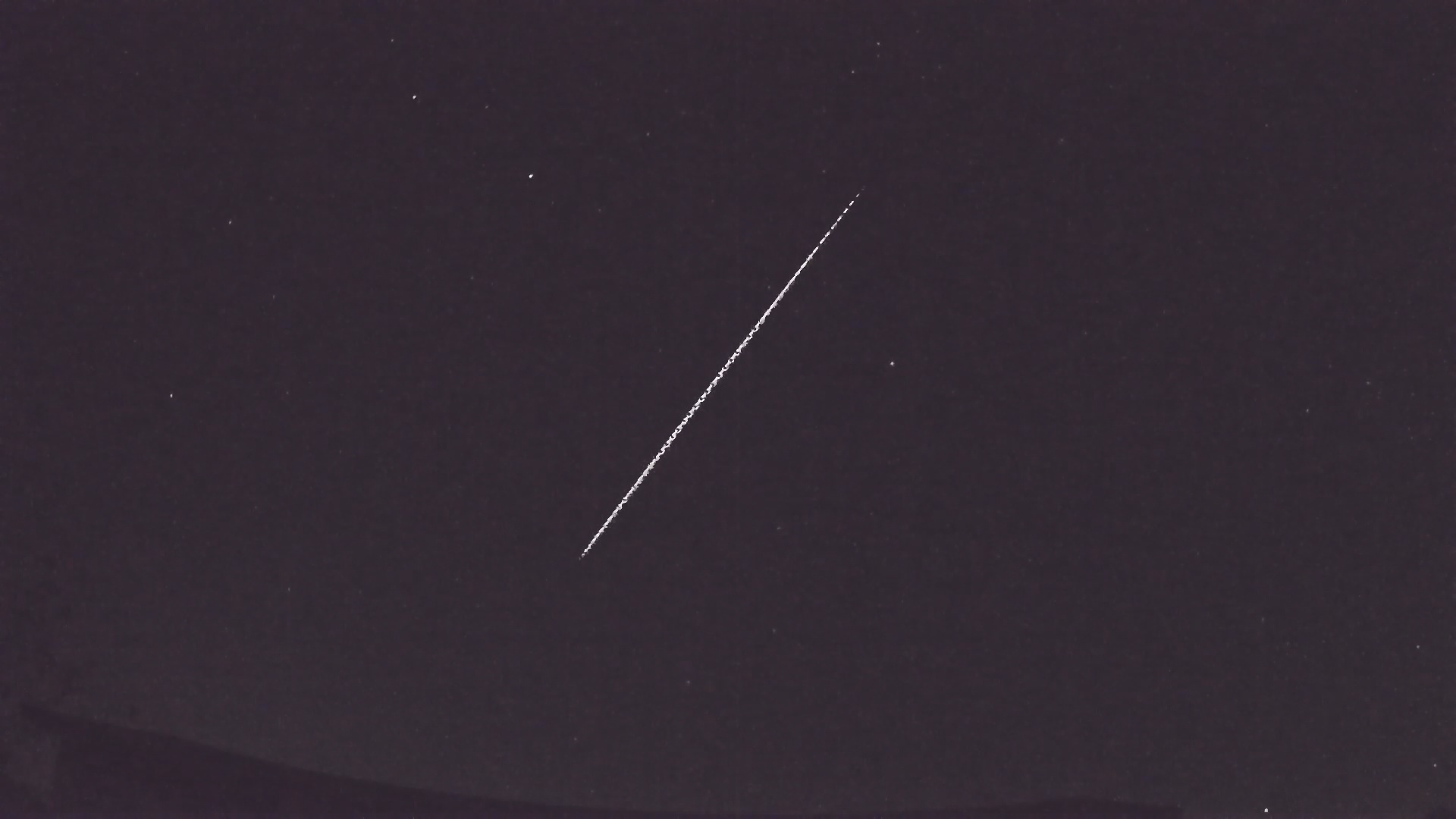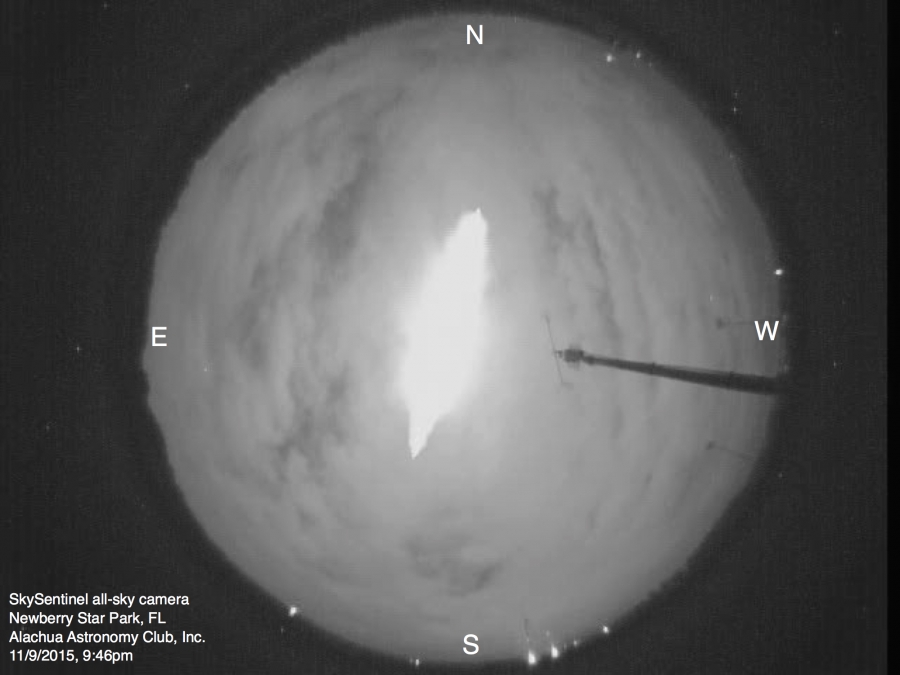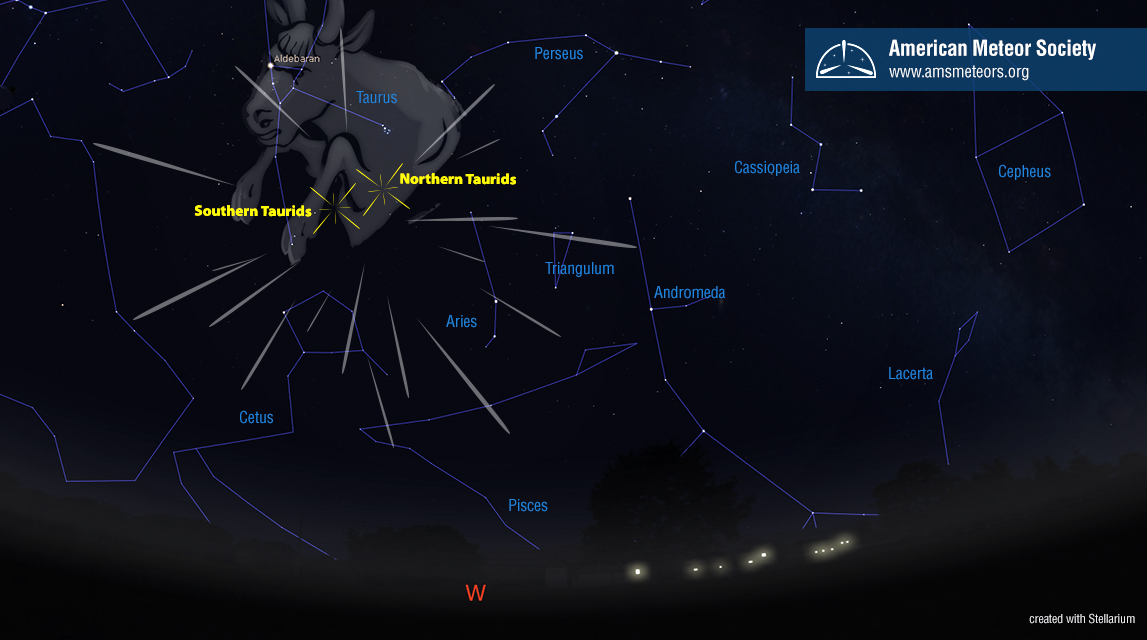
The annual Taurid meteor shower usually does not inspire too much excitement as each branch (North & South) rarely produce more than 5 shower members per hour at maximum. They are usually in the background for those viewing the more potent Orionid meteor shower, providing a few nice slow meteors in contrast to the swift Orionids. This year could be different though as the southern branch of the Taurids is predicted to produce an increasing number of meteors this year. Astronomers who have studied the Taurid activity have noticed that every 3 or 7 years, the Southern Taurids display an increase in activity along with an increase in production of fireballs, which are meteors that are brighter than every celestial object except the sun and moon. The last “swarm” occurred in 2015, in which observers reported double the normal Southern Taurid rates and a larger portion of fireballs.

The Southern Taurids are active from September 28 through December 2nd. Maximum activity occurs on November 5th, but this is not a sharp peak. Good activity can be observed for roughly two weeks centered on November 5th. In 2022, the full moon occurs on November 8th so the post maximum period will be severely hampered by bright moonlight. The moon will not obscure fireballs, but the normal meteors will be lost in the bright moonlight. Only the last hour or two will be free of moonlight on November 5th. The radiant, which is the area of the sky in which these meteors seem to shoot forth from, is located in western Taurus in early November. The radiant moves just under one degree eastward each night and slightly northward. If you view the Taurids in October, the radiant will actually be located in eastern Aries. Each night past the maximum the radiant will inch closer to the familiar “V” shaped asterism of Taurus.
The term “swarm” usually applies to just the fireballs, but in this case there is an increase to overall activity. Fireballs are caused by meteors that are larger than normal. Normal meteors are produced by pea-sized pebbles and bits of ice. A meteor the size of a softball can produce a sudden flash as bright as the full moon. Some of these larger meteoroids (meteors still out in space) have been concentrated in areas of their orbit that passed close to the planet Jupiter. When the Earth passes close enough to this concentration we will see elevated fireball activity. Just how elevated is just a guess, but one can be certain that the wait between individual fireballs will be far less than the average wait of 20 hours that occurs during most of the year.
Now a meteor shower that produces 10 shower members per hour is nothing to shout about. That’s only an average of one meteor every 6 minutes. And they will not appear every 6 minutes. You may go 15 minutes without seeing any Taurids and then see 3 within a minute or two. That’s just the nature of all meteor showers! As seen from the Northern Hemisphere, the Taurids are active all night long. During the evening hours the radiant is located in the eastern sky so face that direction if you observe prior to midnight. At 2:00am local daylight saving time (1:00 local standard time) the radiant is located high in the southern sky. As the morning hours progress the radiant sets into the western sky. The best time to view the Taurids is when it is located highest in the sky near 2:00am (LDST). These meteors are also visible from most of the Southern Hemisphere. But from south of the equator the radiant does not rise as high in the sky as seen from northern locations so rates will be lower compared to the north. Since the meteors appear in “spurts”, it is advisable to watch for at least an hour to get a true picture of the overall activity. To watch for this long we advise observers to use a comfortable lounge chair with a pillow and blanket. Being cold is no fun while out under the stars! If the moon is in the sky be certain to face away from it to preserve your night vision.

Regardless of moonlight, this is a good opportunity to capture bright meteors using SLR cameras or low light video cameras. While these instruments lack the wide field of view of the human eye, they don’t tire from observing hours on end. For those using SLR cameras, it is suggested to aim you camera so that the lower edge of the field of view lies just above the horizon. The reasoning behind this is that the lower half of the sky presents a thicker slice of atmosphere, thus producing more meteors than seen straight up. The thin atmosphere near the zenith is great for telescopic viewers but not for meteor activity. You will need to experiment with the camera settings so not to overexpose the night sky. It is also advisable to use a motor driven mount so that stars will not trail in the photograph. Trailing stars are fine if you have just a simple tripod and just wish to catch a fireball. But photos with a natural sky and a blazing fireball is often more aesthetic. Also but prepared for dew by using heaters or hand warmers attached to the camera lens.
Viewing meteor activity is a great way to easily contribute to science by being a citizen scientist. In order to produce scientifically useful data you should view for at least one hour and provide shower associations (STA, ORI, SPO, etc) with each meteor you witness. It also is necessary to provide us with the magnitude of the faintest star you can see so that we can determine the conditions you are viewing under. This is easily done by counting the number of stars visible within certain areas of the sky – see also https://www.imo.net/observations/methods/visual-observation/ and here for more tips on viewing meteor showers. In order to share your observations it is suggest that you to fill out a visual meteor report form from the International Meteor Organization. This is only available to registered members, but this option is free to those who just wish to contribute data. Besides it creates an observing log for yourself that you can add to session after session. We strongly encourage everyone to join the IMO as a full member as detailed analysis of the Taurids and others meteors showers is presented in the IMO Journal. Lastly, be sure to share your fireball experiences with us by filling out a fireball report form. It’s easy and fun and combined with other witnesses, allows you to see the trajectory of the fireball along with photos and videos if available.
The next Taurid swarm is predicted in 2025 and will most likely be weaker than 2022, especially since a full moon occurs on the night of maximum activity! Beyond that, 2032 appears to be an exceptional year as the moon will be new on November 2nd and the Earth will pass very close to the center of the swarm that year. Mark your calendar now ![]()
We wish you good luck and look forward to seeing your viewing results!
References
Auriane Egal, Peter G. Brown, Paul Wiegert, Yung Kipreos, (2022). “An observational synthesis of the Taurid meteor complex”. MNRAS 2022.



